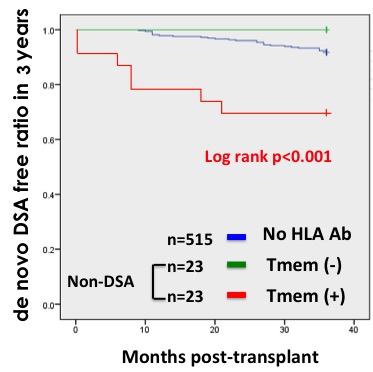Evaluating Preformed Donor HLA Reactive T Cells Using PIRCHE-II Algorithm
1Transplant and Endocrine Surgery, Nagoya Daini Red Cross Hospital, Nagoya, Aichi, Japan, 2Kidney Transplant Surgery, Aichi Medical University School of Medicine, Nagakute, Aichi, Japan, 3PIRCHE AG, Berlin, Germany, 4University Medical Center Utrecht, Utrecht, Netherlands
Meeting: 2020 American Transplant Congress
Abstract number: B-365
Keywords: Allorecognition, Antigen presentation, HLA antibodies, T cell reactivity
Session Information
Session Name: Poster Session B: Antigen Presentation / Allorecognition / Dendritic Cells
Session Type: Poster Session
Date: Saturday, May 30, 2020
Session Time: 3:15pm-4:00pm
 Presentation Time: 3:30pm-4:00pm
Presentation Time: 3:30pm-4:00pm
Location: Virtual
*Purpose: De novo donor-specific HLA antibodies (dnDSA) production involves the indirect allorecognition pathway in which recipient CD4+T cells recognize donor-HLA-derived peptide and recipient HLA class II complexes (pHLAs) presented on the recipient antigen-presenting cells. This recognition make it possible for naive CD4+T cells to differentiate into donor-HLA-reactive memory T Cells (Tmem), which activate donor-HLA-reactive B cells resulting in the dnDSA secretion. Tmem are formed from sensitizing events such as blood transfusion, and their cross reactivity to donor-HLA-derived pHLAs via their T cell receptor could increase the risk to progress to early onset of dnDSA formation. To assess donor-HLA-reactive B cells, a crossmatch test or measurement of DSA is performed routinely in clinical organ transplantation, while the tool to evaluate donor-HLA-reactive Tmem is limited and compricated. Here we use PIRCHE-II algorithm (version 3.0) as an alternative tool to estimate Tmem before transplant.
*Methods: All adult living kidney transplant at Nagoya Daini Red Cross Hospital between 2012 and 2018 were eligible for this retrospective study. In total, 561 transplants without preformed DSA have been analyzed. HLA types (HLA-A, B, DRB1, DRB3/4/5, DQA1) for donor-recipient pairs were determined, and surveillance for DSA had been achieved by Luminex-based assays. Mean-fluorescence intensity (MFI) value >1000 was considered positive. In 46 HLA-sensitized recipients with preformed non donor-specific HLA antibodies (non-DSA), the HLA allele whoses antibodies showed the highest MFI values before transplant was considered as sensitized HLA. This sensitized-HLA-derived pHLAs were calculated using PIRCHE-II, and compared with calculated donor-HLA-derived pHLAs. We hypothesized that donor-HLA-reactive Tmem were present if these two types of pHLAs were common.
*Results: The incidence of dnDSA formation in 3 years were significantly higher for donor-HLA-reactive Tmem positive group (n=23) compared with negative group (n=23) and no HLA antibodies group (n=515) (p<0.05).
*Conclusions: Evaluation of donor-HLA-reactive Tmem may help in predicting a risk of early dnDSA formation after kidney transplant. Application of PIRCHE-II is one of a tool to estimate these immunogenic Tmem.
To cite this abstract in AMA style:
Tomosugi T, Iwasaki K, Sakamoto S, Kanda A, Futamura K, Okada M, Hiramitsu T, Goto N, Narumi S, Watarai Y, Kobayashi T, Niemann M, Spierings E. Evaluating Preformed Donor HLA Reactive T Cells Using PIRCHE-II Algorithm [abstract]. Am J Transplant. 2020; 20 (suppl 3). https://atcmeetingabstracts.com/abstract/evaluating-preformed-donor-hla-reactive-t-cells-using-pirche-ii-algorithm/. Accessed December 21, 2025.« Back to 2020 American Transplant Congress

